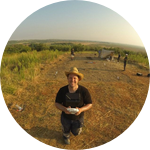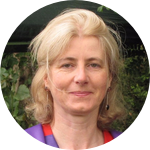Cartography and Mapping
Categories

We're interested in modeling the world around us to communicate spatial information effectively, whether to help orient ourselves or learn about our surroundings and spaces in new ways. The practice of making physical maps has been around for centuries and continues to be present in our every day lives.
The Projects
Browse the participating projects
UAV Infrared Mapping of Archaeological Sites in Greece
If an archaeologist could have one super power- it would be X-RAY vision. Archaeologists are always looking...
Cityscapes and Earth Debates: Fashioning the Geosphere in Nineteenth-Century Ireland.
This project maps the course of scientific ideas as they navigate the cultural landscape of nineteenth-century...
More About This Challenge
The sciency details
Challenge Aims
While much of the land on Earth has been mapped, the terrain and environment is constantly changing. Beyond land, only an estimated 5% of the ocean floor has been mapped. We're still missing information about the space below the Earth's crust, and maps of the universe beyond our home planet. And, using new segments of human effects and activity can help us look at our existing maps differently.
We're looking for the modern day explorers that are working on developing maps and spacial tools, or using mapping to answer specific research questions.
Below are some examples of areas of research:
- map unchartered territories such as caves, deep oceans, island, or other planets
- uses tools like the Google New API to answer specific research questions
- new technologies for mapping 3D spaces and structures
- mapping the spread of disease
- mapping atmospheric changes such as air quality
- aerial mapping using drones or planes
- utilizing maps for ecosystem management
- allowing citizens to contribute to dynamic digital maps
- remapping land that has changed or shifted because of natural disasters or anthropogenic forces, etc.
- studies of the history of maps
Examples of successful projects:
Archaeology & Drones: Mapping Neolithic Structures in the Black Desert, Jordan
People of the Swamp: LiDAR and "Invisible" Structures at El Pilar
Identifying the best habitats for the Caribbean manatee in Cuba using sonar
Mapping Salmon Spawning Sites with UAVs
Monitoring and Banding Birds in the Sacramento Valley of California
Please watch this short 3-minute introduction to Experiment before you get started!


 Challenge Grants
Challenge Grants